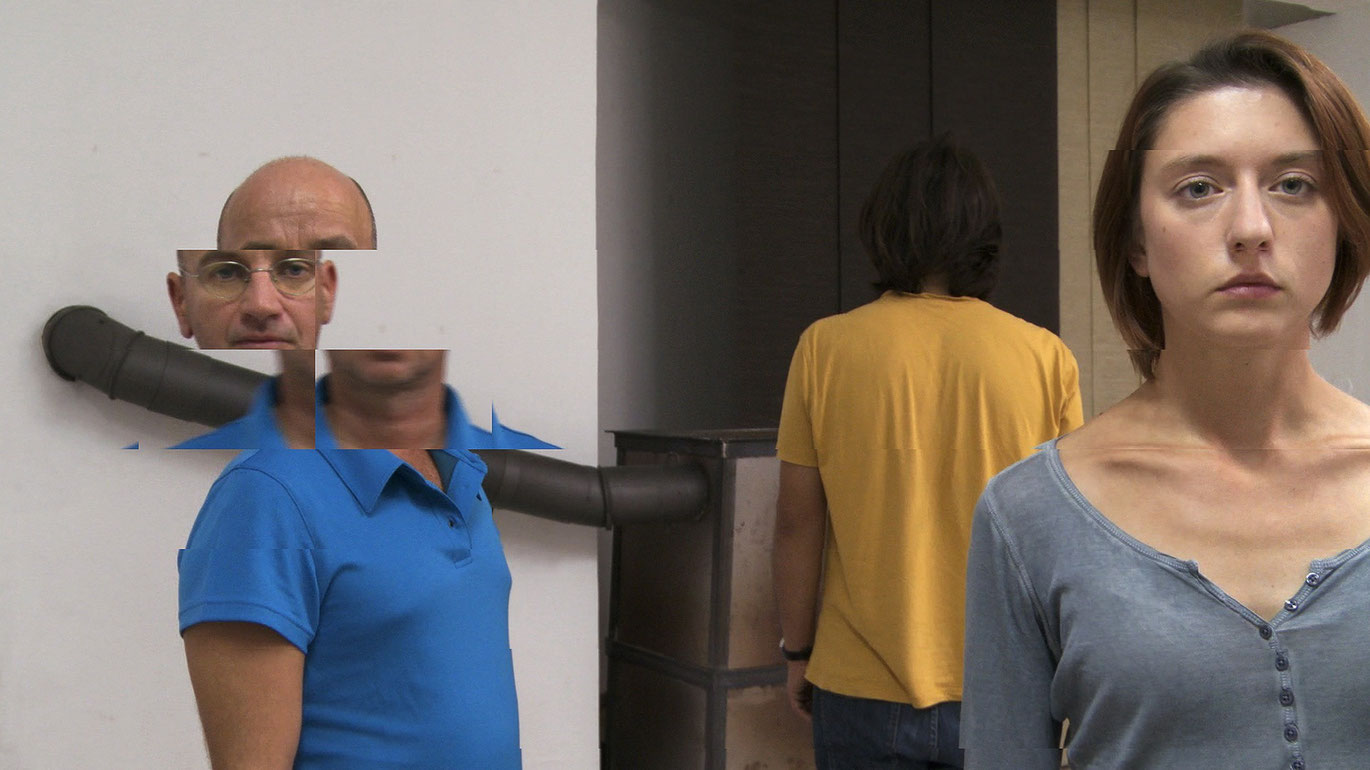from left to right, top to bottom
from left to right, top to bottom
Ever since early performance art, the camera has stood ready as recording apparatus. Film and video seem to be the most suitable medium for playing back the movements of bodies in space and over time, complex processes and narrative entanglements. Yet what happens in the opposite case, when the space performs and along with it, the recording apparatus?
Flora Watzal explores this question in from left to right, top to bottom by showing four performers in a reduced setting. Two men and two women sit and stand, motionless and silent between the flamboyantly illuminated props of a living room arrangement—couch table, sofa, room plants, and floor lamp. But then a slight unease overcomes the four, parts of their bodies begin to arch back and forth. This inexplicable effect ultimately encompasses the entire space: the bodies´ seismic tremors become tectonic jolts and cause the components of the image to move until newly reassembling somewhere else.
By means of the apparatus´ measuring, which horizontally and vertically rasterizes the space, the cinematic space, normally defined by a central-perspective, suddenly becomes a flat, partially abstract image space. The camera seems to have developed a life of its own. It is interested equally in room plants, floor lamp, and ceiling light; but is erratic and generates what are occasionally quite strange effects: horrent hair, trembling leaves, a “fat lip”. The four performers remain practically motionless in this scenario, this experiment, until they simply leave in the end. (Claudia Slanar)
Translation: Lisa Rosenblatt
von links nach rechts, von oben nach unten
Am historischen Tableau Vivant interessiert mich vor allem die Instrumentalisierung der Körper für die Leistung der Bildnachahmung. „...in dieser strukturellen Mimesis des Lebendigen steckt die Metapher von der tödlichen Macht des Bildes.“1) Damit kommt das Feld des bildlichen Referenzsystems ins Spiel. Die naive Vorstellung vom „mumifizierten Körper“, der wieder zum Leben erweckt werden könnte, negiert die Ablösung der bildhaften Zeichen von ihren Referenten.2) Das „lebenden Filmbild“ spielt mit der Ineinssetzung von Bildwirklichkeit und Realität des Filmbildes.
1) Joanna Barck in „Hin zum Film - Zurück zu den Bildern“;
2) verkürzt - ebenda
(Flora Watzal)
von links nach rechts, von oben nach unten
2013
Austria
15 min

